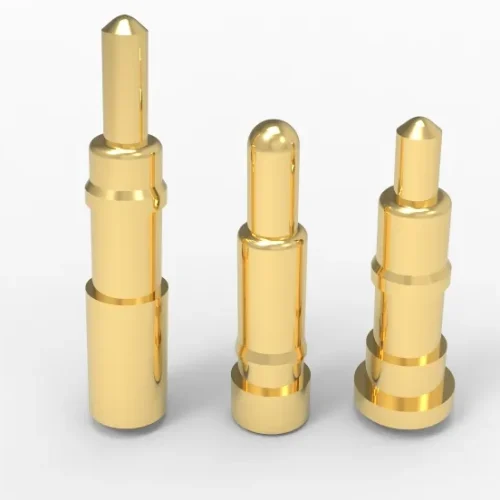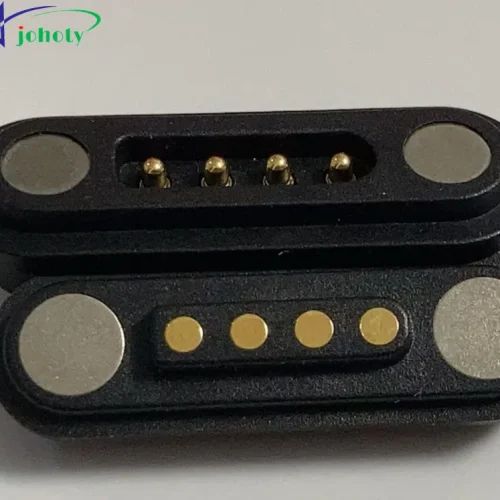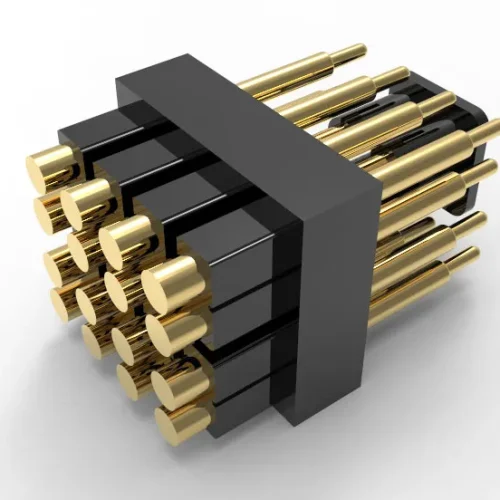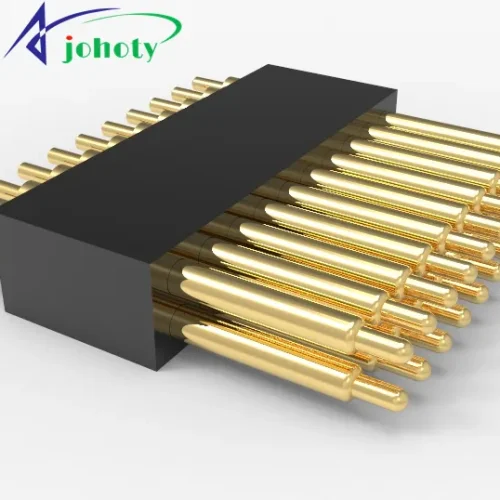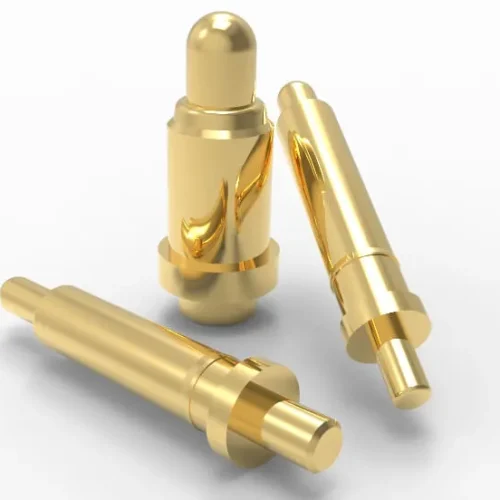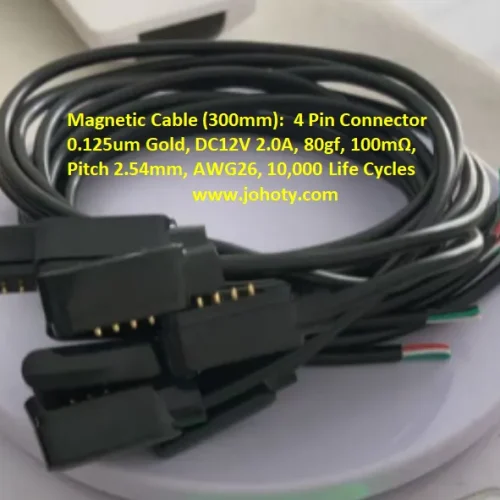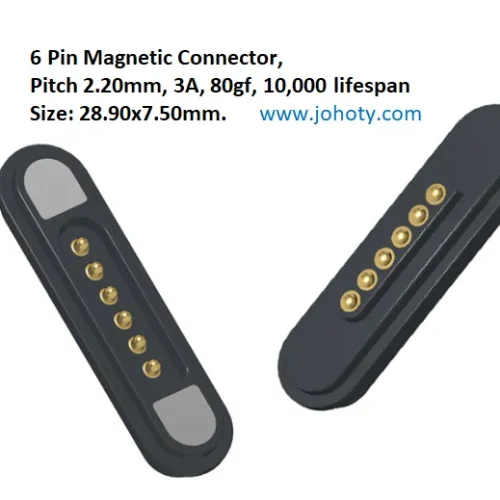Explore 4 Pin Connectors. Deeply know various types, uses, and installation tips. Idea guidance and practical advice for R&D, and factories.
4 pin connectors, what works best for you is the best. It depends on your applications and specific needs. Different applications may require different connector characteristics, such as size, durability, current capacity, signal integrity, etc.
This article is intended for technical experts such as engineers and R&D managers. and we believe the technical depth of the article can meet the expectations of all experts.
Because of the current technology, industrial applications, and feedback from most of our guests. We see the unparalleled importance of the 4 pin connectors.
What are the best 4 pin connectors?
Let’s introduce what are the best 4 pin connectors in the following 7 ways.
1. Performance parameters
- Voltage rating. Voltage (V) is its unit. We can provide ≤10,000V.
- Current rating. Ampere (A) is its unit. We can provide ≤
- Ohm(Ω) is its unit. Suitable for AC signals, especially high-frequency signals. Common values are 50Ω, 75Ω, 90Ω, 100Ω, 110Ω, or as per clients.
- Contact resistance. Ohm(Ω) is its unit. It is the resistance between contacts that affects current transfer efficiency. We can provide ≥2mΩ.
- Isolation resistance. Ohm(Ω) is its unit. Electrical insulation capability between internal parts of the 4 pin connectors. We can provide ≥500MΩ.
- Mating cycles. Press down and then restore to its original position so that a cycle is once. The range is from 10k~100k cycles for the best 4 pin connectors.
- Temperature range. We can provide the normal range is -40℃~+85℃, the wider is -65℃~+125℃, the upper limit is +200℃.
- It is an important defense against EMI, we use metal shells or magnets.
- We can provide IP65, IP66, IP67, IP68, or IP69K. as per customer.
- Hertz (Hz) is its unit. Can cover the range from a few hundred kilohertz (kHz) to several gigahertz (GHz).
2. Physical characteristics
- Square, round, rectangular, grooves, bumps, DIP, SMT, solder up, bending, right angle, thread screw, double-ended, or shaped parts. They are to ensure proper mating or for actual applications.
- Length, width, height, working stroke, full stroke, outer diameters, angle, roughness, etc.
- Contact tips or plunger tips. Sharp, round, flat, crown, cup, cone. Each is available in different sizes.
- Pitch: It is the center distance between the 4 pins or 4 pogo pins. 4.80mm is for USB, 2.77mm is for D-Sub, 1.00mm~2.50mm is for JST. 2.92mm is for RF. We can provide a pitch of ≥00mm.
- Raw materials. Conductive materials of pins or pogo pins, brass, copper, TeCu, BeCu, Au, Ag, Ti, Ti-alloy, etc. Isolation materials, PA9T, PA46, Teflon, rubber, etc. Shell materials, hard plastics, metal, alloy. Anti-corrosion coating, it is for increasing corrosion resistance.
- Finish or surface treatment. Provides electrical conductivity, corrosion, and wear resistance. Gold plating is for electrical conductivity and corrosion resistance, common thickness is from 1u” to 80u”. Silver plating is for high electrical conductivity and for RF. Palladium plating is for corrosion and wear resistance. Platinum plating is for high-temperature assistance and corrosion assistance. Rhodium and Ruthenium plating is for excellent corrosion resistance.
3. Frequency response
- High frequency. We usually use special designs and high-frequency materials to ensure low signal loss and minimal reflections. Ideal for several MHz to GHz.
- From 20Hz to 20kHz. We always use high-quality conductive and insulating materials to ensure accurate transmission of audio signals.
- Transmit digital data. Their frequency response depends on the data rate.
- Applications include antennas, wireless communications, and radar. We usually design the frequency response for a specific frequency bandwidth.
4. Design and engineering considerations
- DIP 4 pin connectors. It is a through-hole connector with tail pins. The PTH structure can electrically connect different layers of the PCB board. With a cap and pack into T&R, can automatically mount to a hole in the PCB by SMT machine.
- SMT 4 pin connectors. It is a flat bottom connector. Good mechanical stability, low mounting height, and high productivity. Also, mount them onto a soldering pad of PCB by SMT machine.
- Double ended. Easy to connect and disconnect, space-saving, fewer connection cables, avoiding connection errors. Ideal for data transmission, power connections, sensor connections, audio and video transmission.
- Right angle. Low-profile design with a high-density layout to improve thermal management. Ideal for automated SMT mounting processes.
- Space saving, controlled bending direction, improved thermal management, enhanced mechanical stability, simplified cabling, and suppression of EMI.
- High current. Low resistance, low loss, high current of ≤ High-temperature resistance, durability, and stability, a variety of connection methods. Widely used in automotive, power electronics, aerospace, industrial automation, and so on.
- Solder cup. Stable connection with low resistance and low loss, suitable for transmitting signals or power. Resistant to vibration, shock, humidity, and temperature changes. High-density layout for a wide range of pin counts. Automated manufacturing, easy maintenance, high security.
5. Mechanical design.
- Housing: Engineering plastics or metals for good protection of internal electrical connections.
- Pins or Pogo Pins: A key component in the transmission of electrical signals or power.
- Male and female of 4 pin connectors, connect to two or more devices or components.
- Contact system. The part between the pins and the housing. Sufficient stability and reliability to ensure good performance of electrical signals or power transmission. Typically includes pogo pins or other forms of contact.
- Locking and unlocking mechanisms. Ensure connection stability, commonly used in push-pull, swivel, torque, fasteners, or other types of locking designs.
- Waterproof and dustproof. Protect internal electrical connections from damage. Popular waterproof we provide are IP65, IP66, IP67, IP68, and more.
- Mechanical strength. We often take into account the vibrations, shocks, and mechanical stresses to which they may be subjected during use. This ensures the stability and reliability of the 4 pin connectors.
6. Thermal management.
- Raw materials. Metal and engineering plastics. We often consider raw materials with good thermal conductivity to ensure that they can transfer heat efficiently.
- Cooling. We often consider active or passive cooling of 4 pin connectors in high-power applications.
- Temperature sensor. Monitor 4 pin connectors temperature to prevent overheating.
- Heat sink. Helps disperse and dissipate heat near 4 pin connectors.
- Current capacity. They should be large enough to hold and transmit the required current to minimize excessive heating.
- Temperature limit. Ensure that they operate within their rated temperature range, which can improve their performance and reliability.
- Insulating materials. Ensure sufficient high-temperature resistance to prevent degradation or deformation at high temperatures.
7. Quality control and reliability
- Raw materials selection. Selection of the appropriate raw material is critical to the quality and reliability of the 4 pin connectors. The housing, pins or pogo pins, and insulation should have good mechanical strength, electrical properties, and durability.
- Manufacturing process controls. Strict control of the manufacturing process is the key to ensuring the quality of 4 pin connectors. This includes the selection and inspection of materials, process control of the production line, accuracy of component assembly, and quality testing.
- Quality standards and certification. Compliance with quality standards and certification, ISO9001, ISO14001, etc.
- Incoming material inspection. An important step in preventing low-quality parts from entering the production process.
- Function test. Ensure that every 4 pin connectors are working properly. Includes electrical performance testing, plug testing, temperature testing, etc.
7.1 Reliability test
- Evaluate the performance of 4 pin connectors under different conditions. Such as vibration, humidity, high and low temperature, electrical performance test, salt spray test, and EMC test. This helps to determine the reliability of the 4 pin connectors under harsh conditions.
- Life cycles test. Estimate its life cycles in actual use. This includes plug life cycle testing and electrical life cycle testing.
- We always design and manufacture our 4 pin connectors to meet strict safety standards. And we ensure that our customers are not exposed to hazards during operation.
- Quality tracking. We have a quality tracking system for the root cause.
- Professional ASS. We provide customers with after-sales support and maintenance services. this ensures that they are reliable in use and that any problems are dealt with on time.
Challenges and solutions of 4 pin connectors
High-frequency signaling
Possibly affected by signal loss and crosstalk. To optimize performance, Select low-loss materials, such as high-frequency cables and insulation. Use differential signaling to reduce crosstalk. Optimize the electrical design of 4 pin connectors to reduce resistance and inductance.
High current transmission
They may heat up, causing an increase in resistance. Solutions: Use of highly thermally conductive materials to enhance heat dissipation. Increasing the conductive cross-sectional area of the 4 pin connectors to reduce resistance. Use quality metal pogo pins to improve current transfer.
Dustproof and waterproof
Maintain a good seal to prevent the external environment from affecting the internal electrical connections. Solutions: Utilizes gaskets and sealants to ensure tightness. Designed with waterproof and dustproof housings for improved environmental resistance.
Mating life cycles.
High frequency or frequent mating operations may cause mechanical wear of the 4 pin connectors. Solutions: Utilizes high-quality materials, such as abrasion-resistant pogo pins and housings. Use of well-designed mating mechanisms to minimize wear and tear.
Thermal management
In high-power applications, they can get hot and require thermal management. Solutions: Designing thermal structures, such as heat sinks or fans, to help dissipate heat. Use of high thermal conductivity materials to improve heat transfer efficiency.
EMI
They may introduce or be affected by EMI, especially in high-frequency or high-speed signal transmission. Solutions: Anti-interference design, such as shielded enclosures or filters. Optimize pogo pin layout to minimize electromagnetic emissions.
Space limitations
Customers often need to install 4pin connectors in limited space. Solutions: we often optimize pogo pin layouts and housing sizes to fit space constraints
Raw materials selections
Selecting the right raw material is critical to the performance of the 4 pin connectors. Solutions: We usually choose materials with good electrical conductivity, high mechanical strength, and good chemical resistance.
Use cases of 4 pin connectors
Background:
Our client, an innovative company from Italy was working on the development of high-performance portable radios in June. The client wanted customized 4 pin connectors for power supply, data transfer, and external device connections.
Challenges:
Our client was facing 3 major challenges
- Different markets and customers require different types of radio equipment. So, the connectors must be versatile and customizable to meet their different needs.
- Radio devices require high-frequency data transmission and good signal integrity to ensure interference-free communication.
- These radio devices may be used in a variety of environmental conditions. So, the connectors must be durable and adaptable to cope with harsh conditions.
Solutions:
We worked out the best solutions with our clients in 3 weeks, including various qualification running tests.
- Our engineering team closely worked with clients to customize 4 pin connectors based on the lists of different applications. These connectors met different sizes, pin configurations, and electrical characteristics for diverse market needs.
- Our engineering team performed electromagnetic simulation and testing of 4 pin connectors to optimize high-frequency data transmission and signal integrity. We used special raw materials and designs to minimize signal loss and crosstalk.
- 4 pin connectors passed rigorous environmental testing to ensure durability and environmental resilience. And ensured that the female of the 4 pin connectors also met the IP67 waterproof.
Results:
By adopting these solutions, our clients have successfully developed a range of high-performance, versatile, and customizable radio devices. These devices are used in a wide range of different markets and applications. Including military communications, emergency rescue, industrial automation, and the Internet of Things.
The design and performance of the 4-pin connectors we offer help these radio devices achieve efficient communication and data transmission. While maintaining reliability in harsh environments.
Conclusions
Recall
In this blog, we take an in-depth look at various aspects of this critical electronic component. Including detailed introductions, electrical performance, use cases, technical challenges, and the role in different fields, etc. We can see that they have a huge impact on the performance and reliability of your devices and equipment.
4 pin connectors are also a key link in the electronic world. They enable different devices and systems to communicate with each other for data transfer, power supply, and signaling. From consumer electronics, medical devices, industrial automation, aerospace, and more. 4-pin connectors, like all connectors else, play an integral role in a variety of applications.
However
4 pin connectors are not simple to design and manufacture. They must meet a wide range of electrical and mechanical requirements while maintaining reliability under varying environmental conditions. Faced with technological challenges in different fields. We always continue to innovate to provide you with more advanced and reliable connectivity solutions.
In the future, like other connectors. We will continue to evolve 4 pin connectors to meet your demands of rapidly evolving technologies. Such as 5G or the coming 6G communications, the Internet of Things, and smart manufacturing. Whether it’s in consumer electronics, medical, automotive, industrial, or communications. We believe our 4 pin connectors and various connectors will continue to play a key role in helping your projects
Appreciation
Thank you for reading this blog! we hope you have gained a better understanding of 4 pin connectors. And can fully utilize this important component in your projects and fields. If you have any confusion or need more information, please contact us. We look forward to sharing more knowledge about electronics and connectors with you in the future. Thank you!





